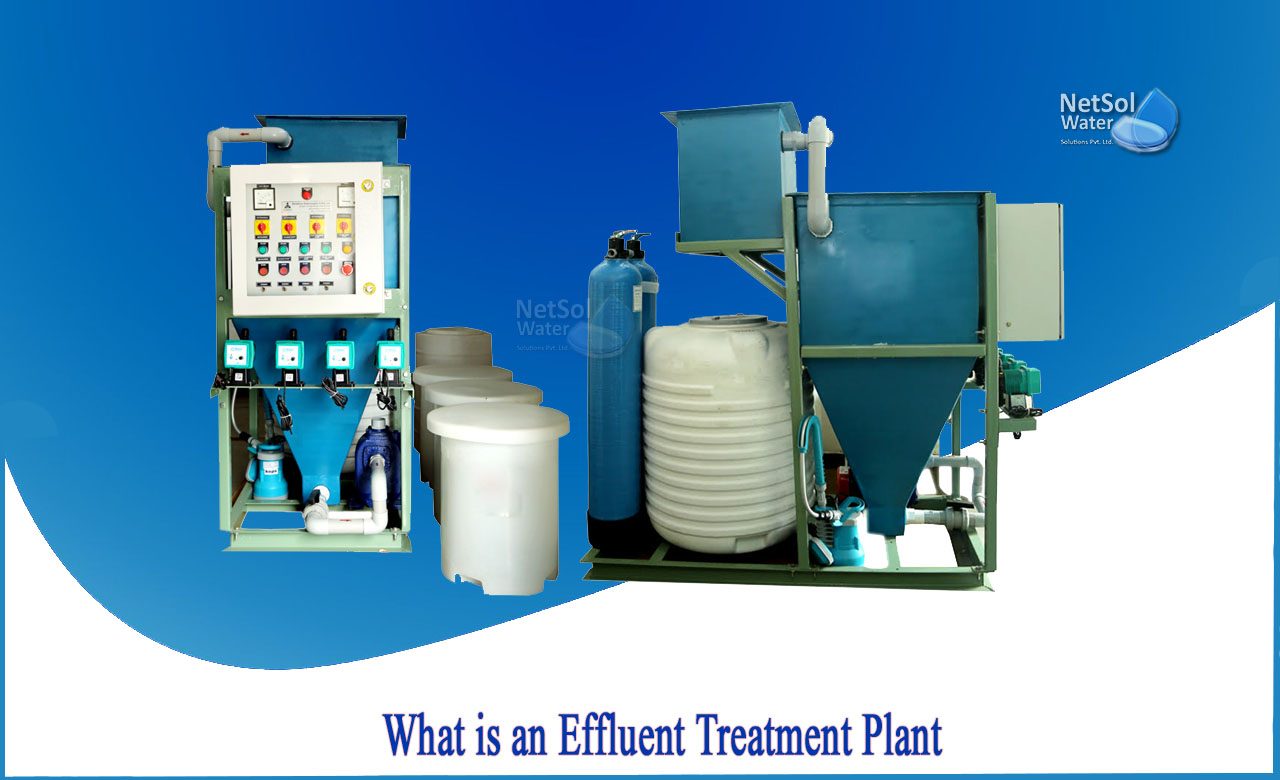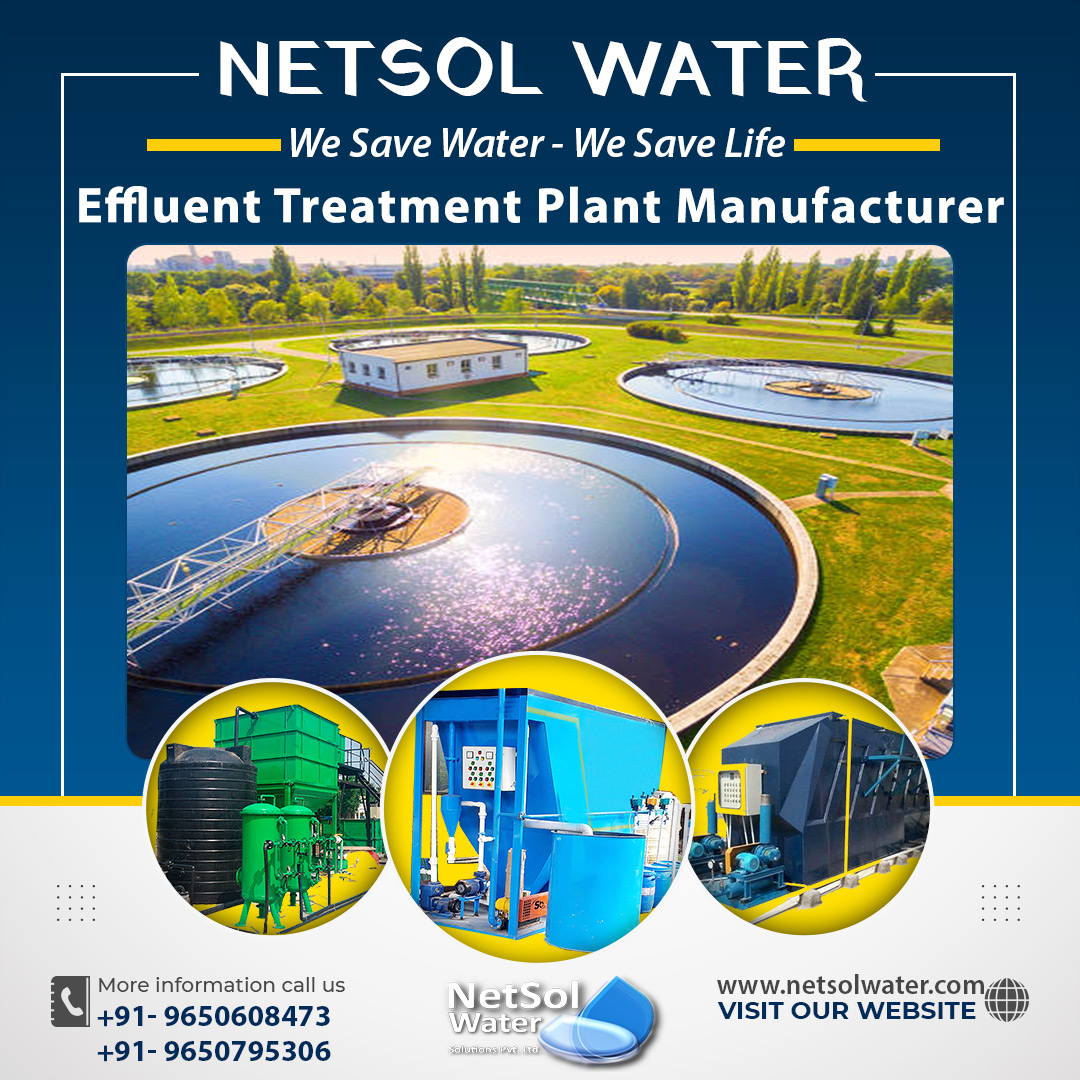What is an Effluent treatment plant?
Effluent treatment plant, also known as ETP or ETP plant, is a waste water treatment process (WWTP) utilised for waste water treatment and meeting pollution board disposal rules and regulations.
ETP plants use wastewater treatment to treat pollutants such as organic matter, inorganic matter, heavy metals, oil and grease, suspended particles, and so on. A batch procedure or a continuous flow process might be used for treatment. Chemical treatment, biological treatment, a mix of chemical and biological treatment, and heat treatment are the several types of wastewater treatment plants.
Industrial effluent treatment process:
The treatment of various effluents differs depending on the kind of effluent. Wastewater enters the effluent or sewage treatment facility and is processed multiple times before being discharged into the environment.
The following phases are included in the industrial wastewater treatment plant process:
A. Preliminary treatment: The goal of this step is to physically separate large pollutants. Cloth, paper, plastics, wood logs, and so forth. This level/process includes the following:
Screening is the initial unit activity in a waste water treatment facility. A screen is a device with uniform apertures that serves the aim of removing big floating solids.
Sedimentation is a physical water treatment method that removes suspended materials from water using gravity.
Grit Chamber The wastewater that flows through the grit chamber eliminates the dense inorganic materials that have made their way into the sewers, such as gravel, metal shards, and sand. Grit removal can help to prevent pump damage and operating troubles.
Clarifiers are tanks designed with mechanical ways to continuously remove sediments accumulated by sedimentation prior to biological treatment.
B. Primary treatment: Its goal is to remove floating and settleable items such as suspended solids and organic waste. Both physical and chemical approaches are employed in this therapy. It includes the following:
Flocculation This is a physical process that does not entail charge neutralisation. It entails aggregating destabilised particles into big aggregates so that they may be easily removed from the water.
Coagulationis a procedure in which coagulants are introduced to a liquid in order to rapidly settle minute solid particles into a bigger bulk. It allows for particle removal by sedimentation and filtration.
Neutralization The major goal of this procedure is to keep the pH in the range of 6-9 to fulfil the needs of the various processing units in the ETP system.
Primary clarifiers: These are used to decrease the velocity of the water to the point where organic particles sink to the bottom of the tank and contain equipment for removing floating solids and greases from the surface.
C. Secondary or biological treatment: The goal of this treatment is to treat the effluent from primary treatment further to remove suspended particles and residual organics. Biological and chemical mechanisms are engaged in this stage.
The activated sludge process uses air and a biological floc made up of bacteria to clean industrial waste water.
Aerated Lagoons: A treatment pond with artificial aeration to improve waste water biological oxidation.
Trickling filters, also known as sprinkling filters, are extensively employed in the biological treatment of home sewage and industrial waste water.
Rotating Biological Contactor It entails exposing wastewater to a biological medium in order to remove contaminants before discharging the treated wastewater into the environment.
D. Tertiary/advanced/disinfection treatment: The goal of tertiary treatment is to offer a last treatment step to enhance the effluent quality to the appropriate level before it is reused, recycled, or released to the environment.
Chemical coagulation and sedimentation are used to promote the removal of particles from effluent following primary and secondary treatment.
Filtration To assure high quality water, the cleared wastewater is first routed to the neighbouring filtration facility, which comprises huge filter blocks.
Reverse Osmosis In this procedure, pressure is utilised to drive effluent through a membrane that holds impurities on one side while allowing clean water to pass through on the other.
UV Disinfection: It is thought to be an excellent disinfectant for industrial waste water. By maintaining water purity, it leaves no leftover disinfection in the water. It generates no disinfection byproducts.
Effluent treatment plant design:
The design of an ETP is determined by the quality and amount of waste water discharged from various businesses, as well as the availability of land. If land is scarce in your industry, a Common Effluent Treatment Plant (CETP) is preferable to an Effluent Treatment Plant (ETP).
Conclusion
Netsol Water is well-known and regarded as one of the finest ETP suppliers (Effluent treatment plant supplier). Netsol provides a comprehensive variety of ETP techniques and technologies to fulfil the needs of their customers.




